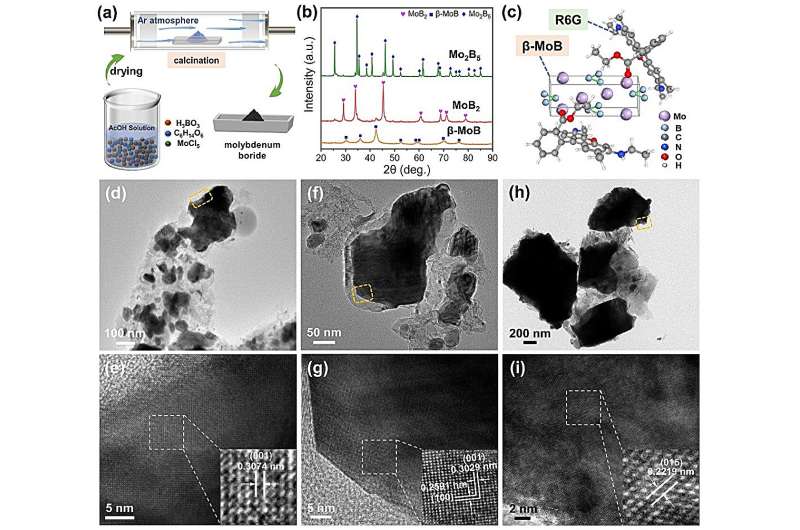This article has been reviewed according to Science X's editorial process and policies. Editors have highlighted the following attributes while ensuring the content's credibility:
fact-checked
peer-reviewed publication
trusted source
proofread
Molybdenum boride ceramics developed for harsh environment SERS detection

A research team has successfully synthesized three different crystalline phases of molybdenum boride with a strong Raman signal enhancement performance.
These findings were published in the journal of Small. The researchers were led by Prof. Huang Zhulin at the Institute of Solid State Physics, Hefei Institutes of Physical Science of the Chinese Academy of Sciences, along with researchers from the University of Massachusetts Amherst.
Surface-enhanced Raman scattering (SERS) is a rapid and non-destructive detection method widely used in various fields including trace pollutant monitoring, food safety, chemical catalysis, and molecular fingerprint identification. However, most noble metal SERS materials are costly and exhibit poor physical and chemical stability, especially under extreme conditions such as high temperatures and strong corrosive environments, where SERS enhancement effect diminishes rapidly.
In this study, researchers leveraged the characteristics of transition metal borides, which can endure extreme conditions like high temperatures, strong acids, and strong bases, to synthesize three molybdenum boride ceramic powders (β-MoB, MoB2, and Mo2B5) based on liquid-phase precursor and carbo/borothermal reduction.
The SERS performance of these molybdenum borides was evaluated using Rhodamine 6G (R6G) probes, and the results indicated that β-MoB exhibits SERS enhancement of five orders of magnitude that is comparable to Au nanoparticles. The excellent SERS enhancement performance of β-MoB can be attributed to its higher adsorption energy for R6G molecules and significant charge interactions between them.
Furthermore, researchers investigated the impact of strong acid and strong base solutions as well as high-temperature oxidation on the SERS activity of molybdenum borides. The molybdenum boride ceramics powders were immersed in solutions of different pH and oxidized at 1000 °C for 30 min under an oxygen atmosphere. The test results indicated that the SERS effect of molybdenum borides could be well maintained even when exposed to such corrosive environments and high temperature.
This work clarifies the phase control methodology and SERS enhancement mechanism of molybdenum boride ceramics, expanding the selection range of SERS active materials from noble metals and semiconductors to ultra-high temperature ceramic materials, which are expected to be used for optical sensing and detection in extreme environments.
More information: Mengen Hu et al, Phase‐Tunable Molybdenum Boride Ceramics as an Emerging Sensitive and Reliable SERS Platform in Harsh Environments, Small (2024). DOI: 10.1002/smll.202308690
Journal information: Small
Provided by Chinese Academy of Sciences




















